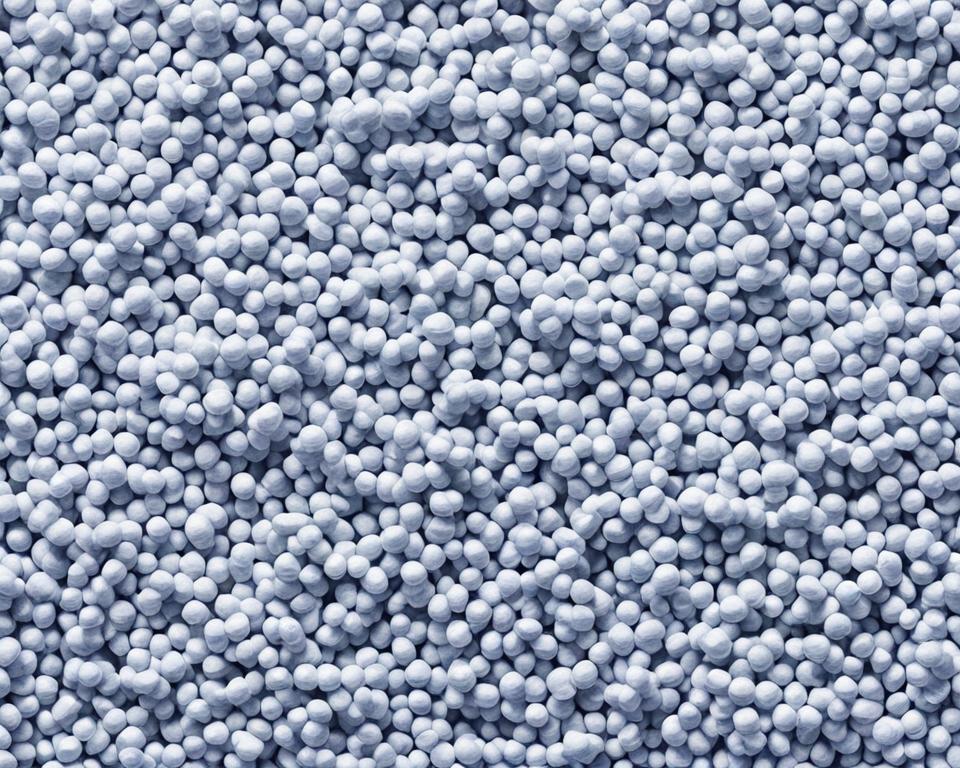Kaolinite is a type of clay mineral that has a variety of uses across different industries. Its unique properties have made it a popular choice for ceramics, paper, cosmetics, pharmaceuticals, and construction materials. In this article, we will explore the different applications of kaolinite and how it benefits each industry.
Key Takeaways
- Kaolinite is a versatile clay mineral used in multiple industries.
- Kaolinite is widely used in ceramics, paper, cosmetics, pharmaceuticals, and construction materials.
- Kaolinite contributes to the strength, plasticity, and smooth texture of ceramics.
- Kaolinite coatings improve print quality and brightness of paper.
- Kaolinite is a natural ingredient in cosmetics and skincare products.
Kaolinite in Ceramics
Kaolinite is an essential component in the ceramics industry due to its unique properties. It acts as a clay binder, enhancing the strength and plasticity of ceramic materials. The addition of kaolinite also contributes to the white color and smooth texture of ceramics, making it a critical ingredient in the production of porcelain, tableware, tiles, and sanitaryware.
The use of kaolinite ceramics is highly valued by craftsmen and artists who appreciate its ability to influence the material’s characteristics, giving them more flexibility and control in their work. It allows the production of versatile shapes, precise details, and beautiful finishes.
The versatility of kaolinite in ceramics has made it indispensable in the modern world’s construction and manufacturing industry. Its unique properties make ceramic products more durable and resistant, ensuring they last for many years. With the help of kaolinite, ceramic materials have become more reliable, efficient, and cost-effective.

Clay Ceramics and Kaolinite
In addition to kaolinite, clay ceramics, obtained from the weathering of feldspars and other silicate minerals, are important in the ceramics industry. Mixtures of these clays with kaolinite produce different results, depending on the proportions and firing conditions. For example, adding small amounts of kaolinite to a clay body can increase its solid-state sintering, making the final product more robust and less porous.
The use of specific types of clay ceramics and kaolinite can also create beautiful and unique effects on the final product’s appearance. For example, red-burning clay mixed with kaolinite can create a speckled surface as the kaolinite burns away, leaving behind iron oxide flecks. The addition of kaolinite can, therefore, give decorators an added choice to create unique ceramics that stand out apart from the crowd.
Kaolinite in Paper and Pulp
Kaolinite has an important role in the paper and pulp industry, particularly as a coating agent to improve print quality and brightness of paper. The fine particles fill in surface defects of paper, creating a smoother finish. Kaolinite coatings also enhance ink absorption and reduce ink smudging, making it perfect for high-quality printing and packaging applications. The use of kaolinite paper coatings is beneficial as it provides durable and glossy print.

The use of kaolinite paper has gained popularity due to its performance and cost-effectiveness as compared to alternatives such as titanium dioxide. The production of paper coating materials made with kaolinite is also environmentally friendly. This eco-friendly coating reduces the amount of total suspended solids in wastewater, resulting in a reduction of waste by up to 60%.
Kaolinite in Cosmetics
Kaolinite has been gaining popularity as a natural ingredient in cosmetics and skincare products. Due to its absorbent properties, it effectively absorbs excess oils and impurities from the skin, making it an essential component of facial cleansers, masks, and powders. It is gentle on the skin and helps to improve skin texture, leaving it smooth and soft.
Kaolinite is also commonly used in mineral-based makeup products as a natural alternative to talc. The fine particles of kaolinite provide a smooth texture and enhance the staying power of makeup. It is often found in natural and organic makeup brands and is a popular choice for those with sensitive skin.
For those looking for natural skincare products, kaolinite cosmetics make an excellent choice. Its innate properties make it an effective, gentle, and safe skincare ingredient that is perfect for daily use.

Kaolinite in Pharmaceuticals
Kaolinite, also known as medicinal clay, has been utilized in traditional medicine for various ailments for centuries. Its adsorbent properties make it useful in binding toxins and heavy metals in the body, making it a popular ingredient in pharmaceutical products and manufacturing.
Ingesting kaolinite can help soothe digestive issues such as diarrhea and stomach ulcers, due to its natural ability to absorb excess fluids. In addition, kaolinite is used as an excipient in pharmaceuticals, a substance added to medications to improve their stability and effectiveness.
As a natural substance, kaolinite has been used in numerous pharmaceutical applications. Its medicinal benefits have been well documented and are used in both traditional and modern medicine for a variety of medical treatments and conditions.

Binding Toxins and Heavy Metals
Kaolinite’s high adsorption capabilities make it useful in binding toxins and heavy metals present in the body. This makes it an ideal ingredient for products designed to detoxify and cleanse the body.
Natural and Safe Alternative
Kaolinite is a natural and safe alternative to other chemical ingredients found in pharmaceutical products. Its gentle nature on the body makes it a popular choice for those with sensitive stomachs as well as those seeking natural healthcare alternatives.
Kaolinite in Construction Materials
Kaolinite is a versatile material that finds extensive use in construction applications. Its unique properties make it ideal for the production of lightweight aggregates that are used in various construction materials. Lightweight aggregates made by firing kaolinite at high temperatures can be used in insulation materials, lightweight concrete, and plasterboard.
The use of kaolinite in construction materials offers several advantages. The primary benefit is that the aggregates are lightweight, which in turn reduces the overall weight of the materials. This property makes them ideal for use in structures that require a lightweight yet sturdy material.
Moreover, the aggregates produced from kaolinite have better insulating properties compared to traditional aggregates. They offer enhanced thermal insulation, which in turn helps to reduce the energy consumption of the building. The use of kaolinite-based lightweight aggregates also provides better acoustic insulation properties than traditional materials.
Another advantage of kaolinite in construction is its fire-resistance properties. When used in construction materials, kaolinite can help to improve the fire-resistance of the structure. This property is especially beneficial in high-rise buildings where fire safety is of utmost importance.
In conclusion, kaolinite is an essential component in the production of lightweight aggregates used in various construction materials. Its unique properties provide several advantages, including reduced weight, improved insulation, and increased fire-resistance. As such, kaolinite will continue to play a significant role in the construction industry as it strives to meet the demands of modern building techniques and sustainable practices.




